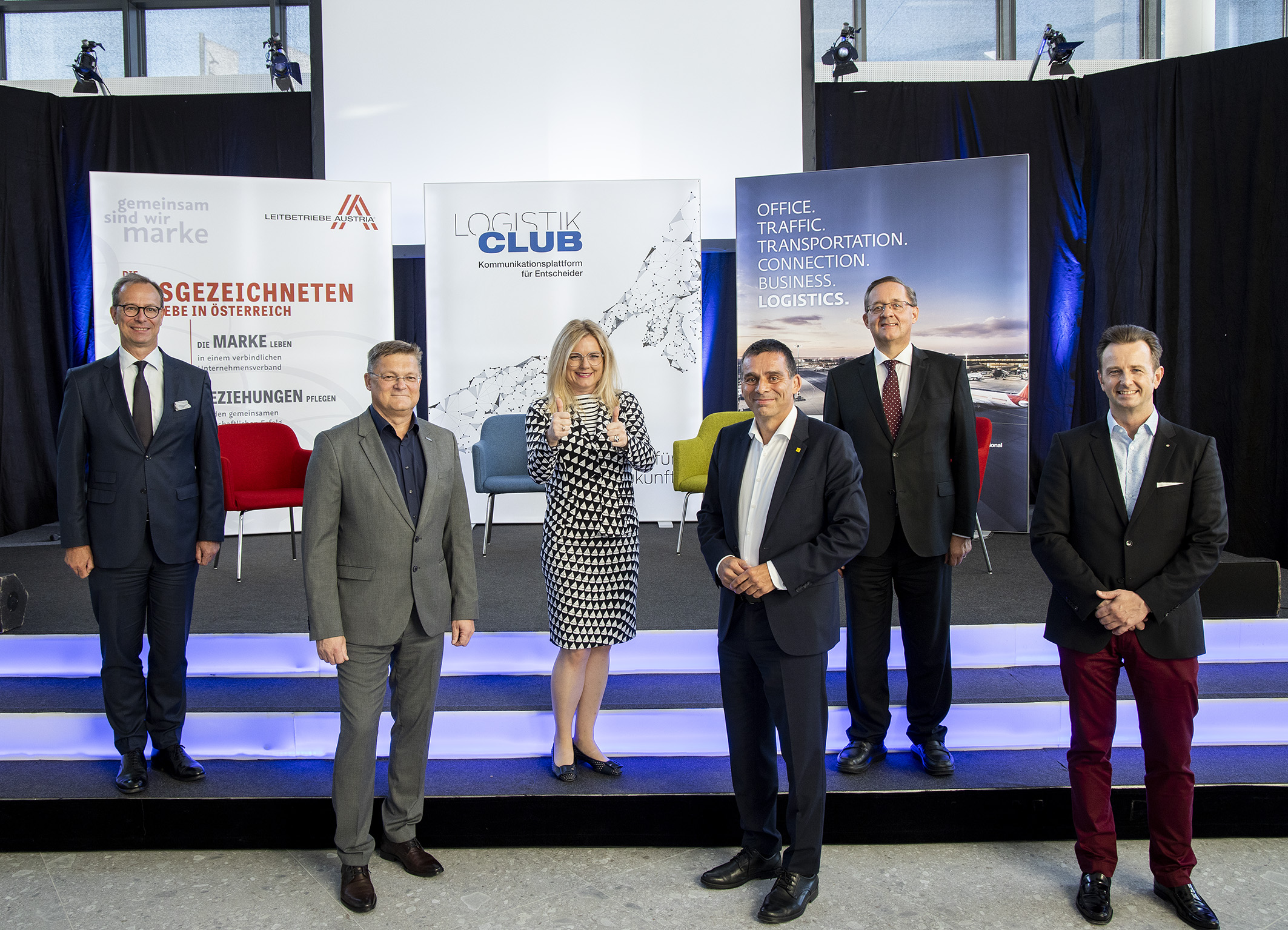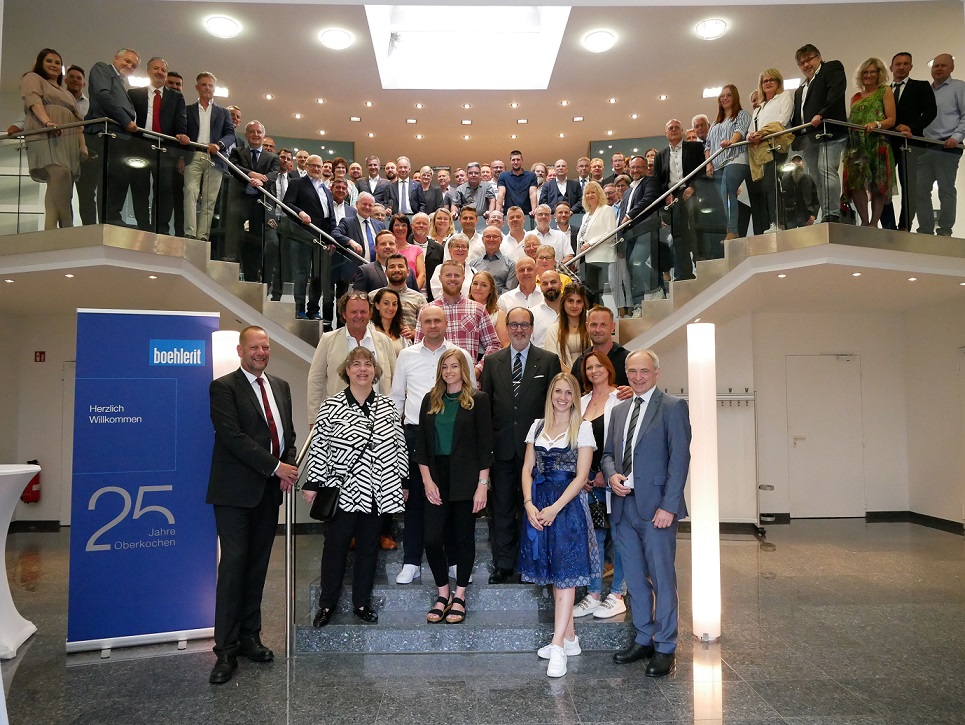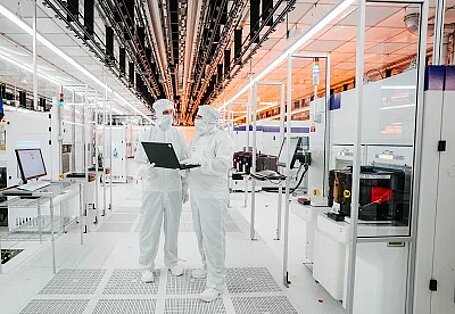An efficient logistics network is a key factor in assuring the success of a particular business location. Intralogistics is an important – but often overlooked – sub-area of logistics, which is coming increasingly to the fore. It is basically defined as the movement of goods and materials within manufacturing and logistics hubs. The subject was recently discussed during a special conference entitled ‘Intralogistics – spearheading digitalisation’ organised by Logistik.Initiative.Austria and Leitbetriebe Austria, which was attended by a number of illustrious delegates. The takeaway message from the conference was that the continuing digitalisation of complex logistics processes will offer excellent opportunities for Austrian business.
Günther Ofner, Executive Director of Vienna Airport and event host, highlighted the vitally important role the logistics sector plays in the competitiveness of a given location. “The sector acts as an interface between manufacturers, distributors and consumers. This interface needs to function seamlessly and efficiently. Due to the massive growth in the movement of goods, it only functions well if there is continuous innovation and especially if there is a consistent effort to digitalise all processes.”
Bringing logistics hubs back to Austria
According to Managing Director of Leitbetriebe Austria Monica Rintersbacher, “A significant proportion of logistics services – especially those supplied to the eastern Austrian market – are currently provided in neighbouring countries. The more conventional warehouses that depend largely on lower-skilled workers are replaced by fully digitalised logistics hubs run by highly-qualified staff, the more likely it will be that Austria will be able to establish itself as a strong logistics centre again and bring increased enterprise value back to Austria.” Evidence of the sector’s enormous potential can be seen in the freight of about 300,000 tonnes that goes through Vienna Airport each year.
Georg Konetzky, Department Director of the Federal Ministry of Digital and Economic Affairs continued discussing the subject in the same vein. “We want and need to make greater efforts to bring manufacturing back to Austria and Europe and to recreate added value. The ongoing digitalisation of intralogistics offers the opportunity to achieve major efficiency gains and increase the competitiveness of Austria as a place to do business. At the same time, it will help to avoid job losses and in fact create high-quality employment opportunities here in Austria.”
Georg Konetzky also believes that innovative intralogistics could play an important role in helping to strengthen Austria’s economy and labour market: “If goods for the Austrian market are also handled within Austria, this will significantly improve the country’s resilience in times of crisis and help to protect our companies and jobs.”
Peter Wilfinger, Managing Director of Kardex Austria, a specialist manufacturer of automated storage and retrieval systems, outlined the structural changes to the flow of goods that can be achieved through innovative logistics solutions: “Digitalised logistics hubs can counteract the trend of ever bigger logistic centres which are being located even further away from customers. They facilitate greater regionalisation and increase security of supply, even when borders need to be closed, as was the case during the COVID crisis.” Provider of comprehensive intralogistics solutions Jungheinrich, represented by Managing Director Andreas Ausweger, is using increased digitalisation and the networking of all processes in logistics centres to underpin its use of driverless transportation systems – an innovation which is going to significantly change intralogistics in the coming years.
Convenience matters
The Austrian Post, which is breaking company records by delivering more than 150 million packages this year, was represented by Peter Umundum, Board Member in charge of the Parcel and Logistics Division, who underlined Austrian Post’s ongoing drive to develop digitalisation and automation, especially at the customer interface. “As far as we see it, the digitalisation of all processes is not primarily a question of reducing costs; we predominantly need them to continue improving the quality of our services. Austrians are receiving more parcels than ever before, which is why we want to use every opportunity to make it an easy and stress-free process for our customers. The introduction of self-service zones, the Post App, online parcel redirection services etc. has enabled us to significantly increase levels of customer convenience.”
About Vienna Airport, Jungheinrich, Kardex Austria, Austrian Post
The four leading Austrian companies at the podium are experts in the field of intralogistics. To find out more about these companies, visit the Leitbetriebe Austria website.
Vienna Airport: https://leitbetriebe.at/flughafen-wien-ag/
Jungheinrich: https://leitbetriebe.at/jungheinrich-austria-vertriebsges-m-b-h/
Kardex Austria: https://leitbetriebe.at/kardex-austria-gmbh/
Austrian Post: https://leitbetriebe.at/oesterreichische-post-ag/
About Logistik.Initiative.Austria
Logistik.Initiative.Austria has around 60 corporate members and is Austria’s leading network of logistics companies. We serve as a catalyst, innovator and manager of (innovation-led) projects on a regional, national and international level. We provide added value for the entire logistics sector and promote Austria’s position as a logistics centre. Our goal is to strengthen the competitiveness of Austria as a logistics centre and to enhance public awareness of the importance of the logistics industry to the Austrian economy.
Enquiries: Leitbetriebe Austria, office@leitbetriebe.at, +4315223033-0






